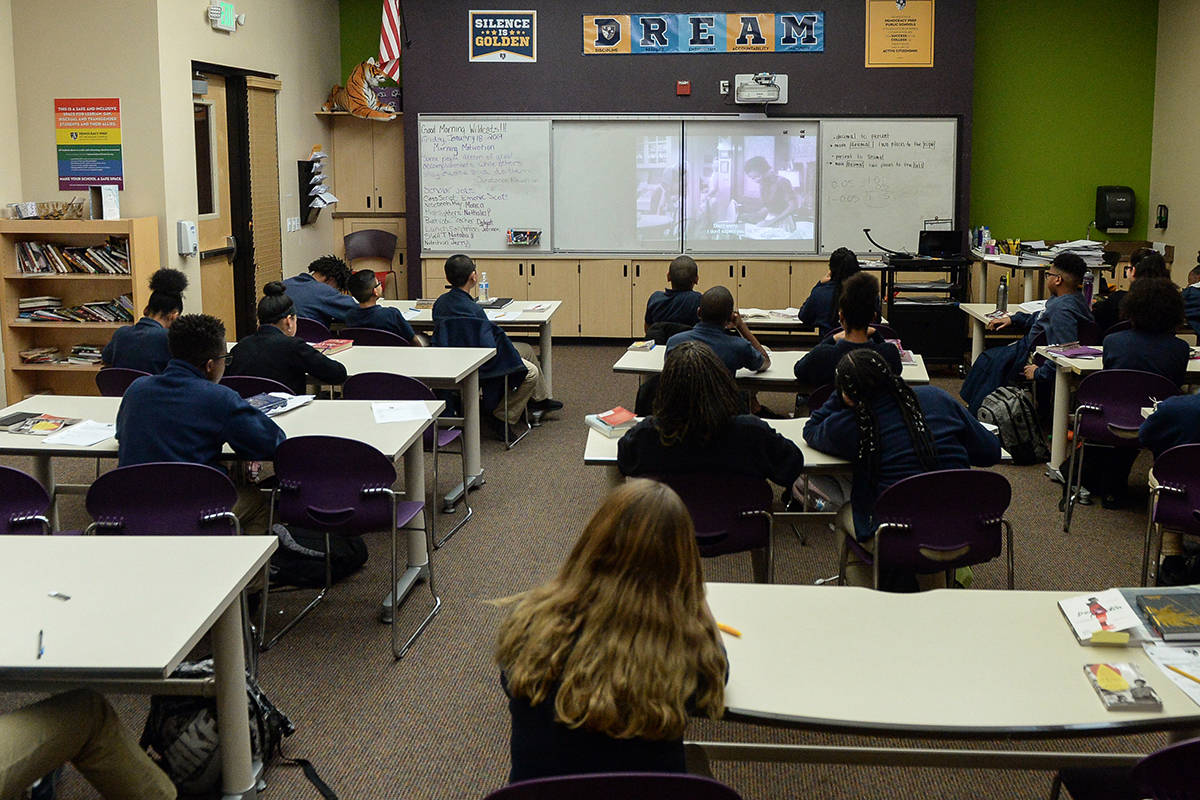EDITORIAL: ‘The costs of this are going to be huge’
Clark County schools remain closed to in-person learning, and Superintendent Jesus Jara said last month that there were no plans to bring students back in October. The School Board, however, could consider the matter in the near future — and should. The longer kids remain at home, the more likely it becomes that many — particularly those in underprivileged communities — will be forever stunted academically.
“The costs of this are going to be huge,” Christopher Morphew, dean of Johns Hopkins School of Education, told The New Yorker about the closures of schools across the country. “Eighteen months of summer melt when you’re already three grades behind is virtually impossible to come back from.”
Indeed, The New Yorker piece — by Alec MacGillis of ProPublica — uses the story of a 12-year-old Baltimore child to chronicle how online learning has failed so many children in poor communities, a scenario that is no doubt being replicated in Southern Nevada many times over. The essay should be must reading for Mr. Jara and the trustees. But perhaps the most striking revelation is the role that union politics and Trump derangement syndrome have played in keeping schools shut down in many locales.
Mr. MacGillis notes how a number of urban districts were moving forward this summer with plans to reopen — safety precautions in place — given that the virus has been far less dangerous for children than the elderly. But when President Donald Trump and Education Secretary Betsy DeVos stated in July that they would pressure governors to ensure kids returned to class, the teacher unions balked.
“The effect of Trump’s declaration was instantaneous,” Mr. MacGillis notes. “Teachers who had been responsive to the idea of returning to the classroom suddenly regarded the prospect much more warily. ‘Our teachers were ready to go back as long as it was safe,’ Randi Weingarten, the longtime president of the American Federation of Teachers, told (Mr. MacGillis). ‘Then Trump and DeVos played their political bullshit’.”
In other words, Ms. Weingarten and her union were willing to sacrifice the futures of millions of kids in service to their hatred for the president. So much for their devotion to “the children.”
Thus begun yet another polarizing battle in the coronavirus debate, with one side insisting that schools re-open and the other raising the specter of campuses filled with body bags holding the corpses of dead children and educators (the Washington, D.C., teachers used precisely that attention-grabbing stunt to frighten parents and to warn against a return to in-person learning).
“There may have been an implicitly political dynamic at work,” Mr. MacGillis writes about the movement to keep schools closed in certain jurisdictions. “The greater the threat posed by COVID-19, the greater Trump’s failure in not containing it.”
But this “political dynamic” will have devastating consequences and threatens the futures of millions of students. “When we have this discussion about sending kids back to school,” Joseph Allen of Harvard’s school of public health told the magazine, “we have to have it in the context of the massive and individual costs of keeping kids at home.”
Mr. MacGillis notes repeatedly that the data show children are not in particular danger from the virus and seem to be less likely to transmit the disease. Hospitalization rates are minuscule for those under the age 18, and deaths have been exceedingly rare. Yet this is dismissed by many in the education establishment who otherwise profess a fealty to “the science.” Becky Pringle, president of the National Education Association, is among them.
“I asked Pringle why her union, like others, had put such emphasis on the virus’s health risks to children,” Mr. MacGillis writes, “and she said, ‘When we look at the data and they say only 0.1 percent of kids will contract it and get seriously ill and die, that’s actually around 50,000 children.’ I noted that the number of children known to have died of COVID-19 nationwide was around a hundred. She said her estimate was what could happen if kids go back to school.”
Ms. Pringle’s baseless alarmism is a disgrace but not surprising.
Such grandstanding should have no place in Southern Nevada. Gov. Steve Sisolak has recently eased restrictions on large gatherings and most businesses that have survived the pandemic are now open in some capacity. There’s no reason that Clark County can’t gradually reopen schools, starting with children in lower grades, under a plan that gives parents the option of in-person learning while allowing vulnerable teachers to do remote work. John Vellardita, executive director of the Clark County Education Association, is far more reasonable and pragmatic than his militant national counterparts and should be working daily with Mr. Jara to develop the necessary protocols.
The alternative is to pile more barriers on top of thousands of local children who can ill afford to remain part of this failed experiment.

















